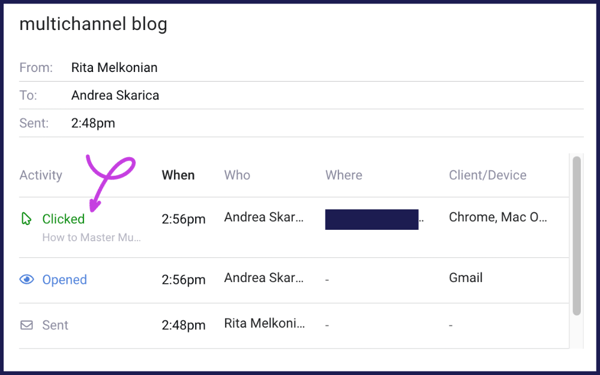Welcome to the first session of Mixology, where instead of crafting cocktails, we’re getting crafty on go-to-market strategies.
In this first episode, Heath Barnett, VP of Revenue at Mixmax, sat down with Eric Iannello, Head of Sales at Salesroom, to discuss the evolution of buyer-seller dynamics and what it means for today’s sales leaders.
With Eric’s unique background and experience, this conversation dives into how sellers can adapt to a shifting market and build authentic relationships with buyers.
Here’s a breakdown of their insightful conversation.
The changing face of sales: From transactional to relational
Eric’s transition from B2C to B2B sales came with a few key lessons that sales leaders everywhere should pay attention to: building real human connections is what sets successful sellers apart.
Eric described how his background in brick-and-mortar, customer-facing roles taught him to adapt quickly and focus on human interactions.
“I bartended for years, and I was really good at it because I enjoyed conversing with people. It’s the same application to my conversations today—I get down to the criteria I need to, but I do it in a manner where we’re sitting around having a beer,” Eric explained.
This informal, relational approach is at the heart of his selling style.
Key takeaways:
- The game has changed: We need to meet our buyers where they are, not where we want them to be. This means understanding their needs, challenges, and buying journey to create meaningful, value-driven interactions.
- Sales is not linear: It’s more like a snowball effect where you move forward, then back, but progress over time.
- Focus on the relationship, not just the transaction: Building a connection that feels like a partnership is crucial. Eric emphasized, “It’s not about the destination, it’s about the journey.”
- Diverse backgrounds matter: Salespeople with unique experiences bring fresh perspectives to the table, especially those who have handled high-rejection environments like door-to-door sales.
The biggest gaps in today’s sales process
Eric believes that too many companies focus either on prospecting or on managing deals, but they miss out on the crucial middle step: creating meaningful engagement between the initial contact and closing the deal.
This lack of focus on sales process optimization is one of the biggest challenges sales teams face.
“The market isn’t the same as it was 18 to 24 months ago, so why are we still abiding by the same rules?” Eric asked.
Gaps to focus on:
- Middle-of-the-funnel engagement: After setting up a meeting, the next steps are often unclear for many sales teams. As Eric explained, there’s too much emphasis on either automating prospecting or managing deals, while the in-between—the actual sales conversation—gets neglected.
- Humanizing the process: Eric made the point that many sellers treat sales as a transaction. Instead, they should be having genuine conversations that focus on building rapport.
Examples of humanizing sales
Both Heath and Eric shared personal stories that illustrated how important it is to move beyond transactional selling and focus on building meaningful relationships. Here are a few actionable strategies they mentioned that sales teams can start implementing right away.
Personalized objection handling
Heath recounted his early days in door-to-door B2B sales, where he would get dropped off in the morning and have to approach every business on the block. This tough experience taught him how to handle objections in real-time, which is critical for humanizing any sales process.
|
💡Actionable tip: When faced with objections, don’t just focus on overcoming them—engage the customer by asking open-ended questions about their concerns. For example, instead of responding to “We’re not interested” with a canned rebuttal, ask: “Can you tell me what specifically doesn’t align with what you’re looking for right now?” This shows you’re genuinely interested in their needs and not just trying to push a product. |
Use real-time insights to personalize the conversation
Eric explained how Salesroom provides real-time feedback during sales conversations, allowing salespeople to adjust on the fly based on the buyer’s reactions. This shifts the conversation from being reactive to proactive, making it feel more like a dialogue rather than a sales pitch.
|
💡Actionable tip: Leverage real-time data tools to guide your conversations. For instance, if Salesroom provides insights that show your prospect is highly engaged when discussing a particular challenge or feature, shift your focus to that area and explore it in more detail. This allows you to adapt to the prospect’s needs in real-time, making the conversation more dynamic and personalized, rather than sticking to a rigid script. |
Leverage social media for personalization
Eric shared that he often looks at a prospect’s LinkedIn or other social media platforms to personalize his outreach. He doesn’t just rely on AI-generated insights but goes a step further by observing what matters to the prospect, such as their recent posts or industry discussions they’re involved in.
|
💡Actionable tip: Before a sales call, spend a few minutes on your prospect’s social media profiles. Identify topics they’ve engaged with or posted about and weave that into your conversation. For example, “I noticed you recently shared an article about AI in sales—what's your take on how it’s impacting your team’s workflow?” This creates a more natural, human connection. |
Follow-up with value, not just a meeting request
Heath mentioned how building trust and rapport doesn’t end with a meeting—it requires meaningful follow-up that adds value. “Referrals are your best pipeline,” Heath said, emphasizing the importance of continuing the relationship even after the initial deal closes.
|
💡Actionable tip: After a call or demo, aside from asking for the next steps, send over a helpful resource—like an article, case study, or tool—tailored to their specific needs. This demonstrates that you’re not just after a quick win but are genuinely interested in helping them succeed. |
Fun fact: Mixmax makes boring links and PDFs more engaging by auto-generating thumbnails. Plus, you can track clicks and downloads with Mixmax Insights to gauge interest.

Mixmax's email tracking feature
Inject your personality
Eric explained how he stands out by injecting humor into his emails and conversations, which immediately makes him more relatable. “I zig-zag and use humor because that’s who I am,” Eric said, explaining how this approach helps break the ice and leads to better rapport with prospects.
|
💡Actionable tip: Don’t be afraid to let your personality shine in your emails or calls. You don’t need to sound overly formal. You can draft your email as if you’re speaking to a child (easy readability, no jargon, friendly, even funny). Just don’t go overboard with the friendliness (aka you’re not texting your friends in the group chat). |
Cutting through the noise
In a world where buyers are constantly bombarded by sales messages, it’s more important than ever to break through the noise. Eric shared some unconventional tactics, such as prospecting on weekends, that have helped him stand out.
“I’m a big believer in prospecting on weekends. Why? Because nobody else does it,” he said.
Out-of-the-box tactics:
- Weekend prospecting: Eric’s approach of reaching out on weekends has proven highly effective because buyers are less inundated with messages during this time.
- Using humor and personalization: Eric leverages his unique personality to engage with prospects, often using humor and a more relaxed tone in his messaging.
P.S. Using a tool like Mixmax, reps can set up automated (and personalized) weekend emails, leveraging AI Smart Send to ensure those emails reach prospects at optimal times.
 Mixmax's AI Smart Send feature
Mixmax's AI Smart Send feature
Coaching reps to be authentic
One of the hardest things for sales leaders is to coach reps away from bad habits. Heath and Eric shared some of their methods for getting reps to be more human and authentic in their interactions.
“Stop, drop, and go,” Eric explained, is one of his favorite coaching exercises. When a rep uses a buzzword or starts relying on jargon, Eric has them stop and start over, encouraging them to simplify their language.
He also makes them write emails as if they were talking to a 3-year-old. “It forces them to break things down in simple terms and remove all the industry fluff,” Eric said.
Exercises to foster authenticity:
- Stop, drop, and go: Anytime a rep slips into jargon, have them stop, drop the buzzwords, and start from the beginning with simpler, clearer language.
- Write for a 3-year-old: Have reps write their emails as if addressing a child, which forces them to simplify their language and focus on clarity.
“It’s amazing how much easier it is to get your point across when you cut out the noise,” Eric shared.
Fun fact: You can use Mixmax’s AI Compose feature to draft personalized messages in less time. But remember, always review and tweak AI-generated emails before sending them.
%20Oct%2023%20GIF.gif?width=600&height=566&name=Mixmax%20AI%20Compose%20(GA%20launch)%20Oct%2023%20GIF.gif)
Mixmax's AI Compose feature
The future of sales: Predictable impact, not just predictable revenue
The conversation ended on a powerful note: the old model of Predictable Revenue is broken.
Heath and Eric both believe that the future of sales lies in Predictable Impact—where the focus is on providing value and impact at every stage of the sales process.
As Heath put it, “It’s not about the meeting, it’s about how we impact the conversation. If we focus on recurring impact, that’s where the real value is unlocked.”
Key insights:
- Shift from revenue to impact: Sales leaders should focus on the impact their reps are having in every interaction, not just pushing for meetings or deals.
- Meet buyers where they are: Understanding where your buyer is in their decision-making process is crucial to building meaningful connections and progressing deals.
Final thoughts
The takeaway from Heath and Eric’s conversation is clear: find out who you are as a seller before focusing on who you’re selling to. Authenticity, empathy, and human connection are the new pillars of success in sales.
As Eric succinctly put it, “Find out who you are as a seller more than who you're selling to—that’s your real value.”
This is just the beginning of the conversation on how to navigate today’s evolving sales landscape. Stay tuned for more insights and strategies in upcoming episodes of Mixology.

.png)

.png?width=450&height=250&name=Episode%20Graphic%20(1).png)
